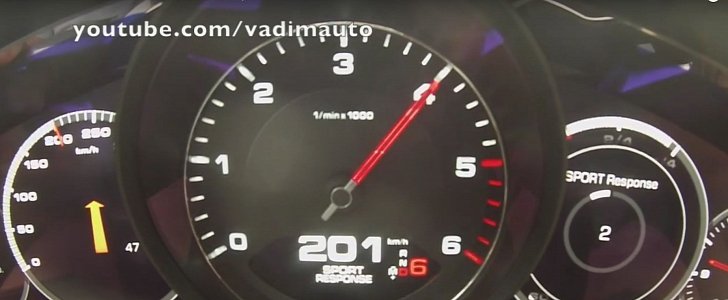Are you a fan of powerful diesel engines in German luxury cars? Then you will love the new Porsche Panamera 4S Diesel, equipped with a 4.0-liter twin-turbo V8.
The model sits in the middle of the 2017 Panamera range, right between the 4S and the Turbo. It will set you back at least €117,000 before the options are added, so it's more expensive than some hardcore Mercedes-AMG and Audi RS models.
Thanks to the all-encompassing umbrella that is the Volkswagen Group, Audi and Porsche were able to co-develop V6 and V8 engines. The one in the Panamera 4S Diesel just happens to be similar to what you get in the new SQ7.
With a total output of 422 PS and 850 Nm (627 lb-ft) of torque, the only diesel-powered Panamera available right now is capable of sprinting from 0 to 100 km/h (62 mph) in 4.3 seconds if the Sport Chrono pack is also included. Of course, you really do need a lap timer on a sedan weighing 2,125 kilograms.
But 0 to 100 km/h sprints are for hot hatch owners and amateurs. No, we need to look at how quickly the Panamera can reach 200 km/h (124 mph). After all, this is one of the fastest diesels in the world with a top speed of 285 km/h (177 mph).
Using this acceleration test carried out during the launch event of the 2017 Panamera, we've determined it takes the 4S Diesel 17 seconds to reach 200 km/h. For the record, that makes it about as fast as the E46 M3, the E39 M5, and the SLK 55 AMG. Of course, the Panamera is a much more sophisticated car than all of those, plus the new 8-speed PDK changes gears faster than a cobra's strike.
We think the whole point of this car is torque. Fuel economy is better than the regular 4S, but only by 1.5 liters per 100 km. Handling might not be its forte, as the heavy diesel engine means you are carrying 180 kg extra (397 lbs), most of which is hanging over the front axle.
Thanks to the all-encompassing umbrella that is the Volkswagen Group, Audi and Porsche were able to co-develop V6 and V8 engines. The one in the Panamera 4S Diesel just happens to be similar to what you get in the new SQ7.
With a total output of 422 PS and 850 Nm (627 lb-ft) of torque, the only diesel-powered Panamera available right now is capable of sprinting from 0 to 100 km/h (62 mph) in 4.3 seconds if the Sport Chrono pack is also included. Of course, you really do need a lap timer on a sedan weighing 2,125 kilograms.
But 0 to 100 km/h sprints are for hot hatch owners and amateurs. No, we need to look at how quickly the Panamera can reach 200 km/h (124 mph). After all, this is one of the fastest diesels in the world with a top speed of 285 km/h (177 mph).
Using this acceleration test carried out during the launch event of the 2017 Panamera, we've determined it takes the 4S Diesel 17 seconds to reach 200 km/h. For the record, that makes it about as fast as the E46 M3, the E39 M5, and the SLK 55 AMG. Of course, the Panamera is a much more sophisticated car than all of those, plus the new 8-speed PDK changes gears faster than a cobra's strike.
We think the whole point of this car is torque. Fuel economy is better than the regular 4S, but only by 1.5 liters per 100 km. Handling might not be its forte, as the heavy diesel engine means you are carrying 180 kg extra (397 lbs), most of which is hanging over the front axle.










